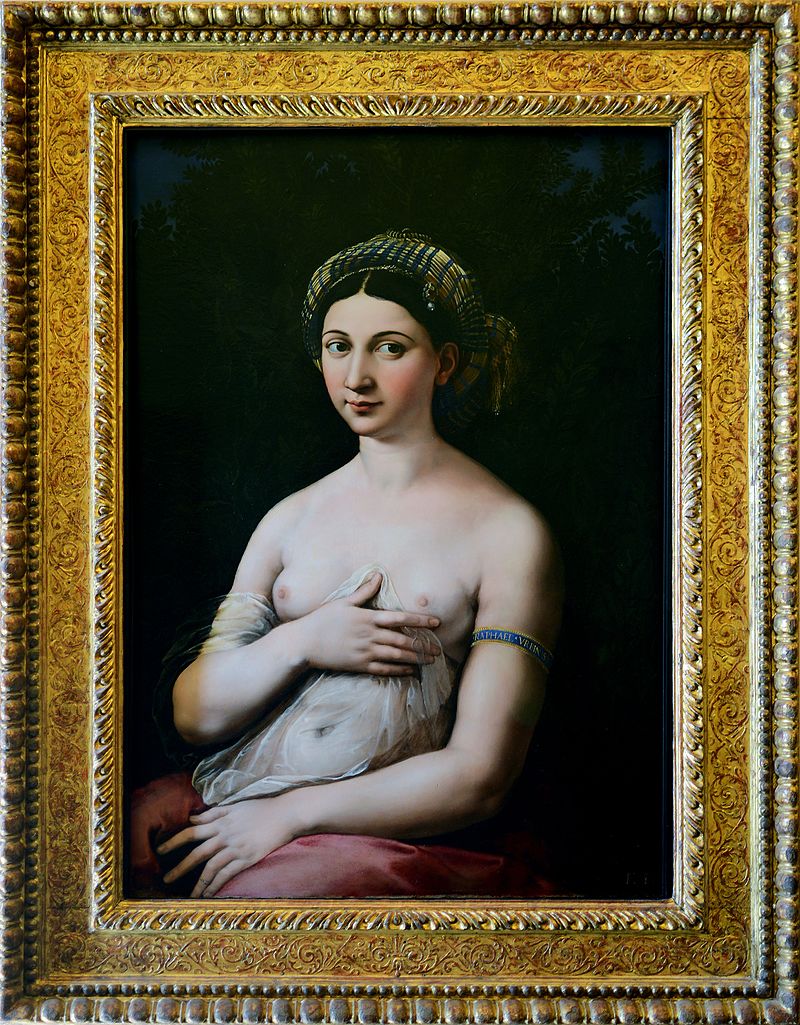Raphael was a legend in his own lifetime: died on Good Friday; labelled 'divine' by Vasari in his Lives; part of the High Renaissance Holy Trinity. If Leonardo was the brains, and Michelangelo the brawn, then Raphael was the beautiful soul. Until the mid-nineteenth century his status as the artist to which all others aspired was unchallenged, but perfection can be stultifying. And Raphael's place on the pedestal made him an easy target. For a post-Romantic world, Michelangelo's heroic struggles and personal dramas were more inspiring; and Leonardo's inquisitiveness and mystery started to intrigue long before Dan Brown. Raphael fell by the wayside: too safe, too conservative, too apparently effortless.
So, the National Gallery's exhibition, a belated celebration of the 500th anniversary of his death, has a difficult job. It's a blockbuster with a small 'b', overshadowed in scale by the Rome version which can still be seen on screen, and hampered by the inescapable fact that many of Raphael's best works are on walls as frescos, or simply unloanable. The curators haven't tried to be clever. The Rome show quirkily worked backwards from his death, but this is a straightforward presentation of the artist's whole oeuvre from the obvious (Madonna and Childs, portraits) to his drawings, tapestry designs and architectural plans. Neither is it over-curated: the recent Hogarth exhibition at Tate Britain turned what was essentially an extensive retrospective into a diatribe against eighteenth century prejudice with a spurious nod towards Europeanism thrown in. The National Gallery gives us a good exhibition. But is it enough? Or rather, in the post-truth, post-beauty world in which we live can Raphael ever be enough?
It's not a coincidence that most reviews pick up on the image of La Fornarina (1518-19), his lover who obtrusively wears the artist's name on a bangle. On the one hand, the image presents us with an insight into Raphael the man, who famously, according to Vasari, died from a surfeit of love: it allows us a glimpse of a less-than-divine human. On the other, it lets critics to discuss whether this possessive labelling is counterbalanced by the woman's coolly assured expression as she regards both artist and viewer. What La Fornarina really shows is Raphael's portrait mastery, that uncanny ability to capture physical likeness and breathing naturalism. National Gallery-goers are perhaps too familiar with his portrait of Pope Julius II (1511-12): sunken, grasping, an old man swamped by his finery and his office, clinging onto the chair for dear life. But the roomful of portraits here is dazzling in its variety.
Varied too are the images of the Madonna and Child, Raphael's bread and butter, churned out with the help of his vast studio but always inventive and innovative. Raphael clearly valued quality control and never cheapened his brand. Yet it is difficult, in a secular world, to interact with the perfect embodiments of motherhood and wise-beyond-their-years infants. The balance, the control, the carefully composed colour blocks, and, to be honest, the sheer quantity of them, all create distance rather than involvement. You start to long for a jarring note, an imbalance, a misjudged colour. Today we want something more than beauty, we're suspicious of perfection, we don't believe in truth.
It seems churlish to complain about genius. If you look beyond the images, or read the catalogue, Raphael was both a genuine prodigy and a workaholic. He was also very good at playing the system: integrating the skill-set of Leonardo and Michelangelo, by fair means or foul, into his work, employing the best artists in his studio, working with tapestry designers and printmakers. He must have been good at pressing the flesh, keeping in with the Papacy who held all the power in Rome, and becoming an antiquarian and architect to do so. Look at his drawings and wonder at the skill, the softness, and the sheer love of observing and recording humanity. But that exuberant ability is smoothed out in the paintings. Is there, in the end, something a bit corporate about them? For me, this was a surfeit of Raphael.




No comments:
Post a Comment